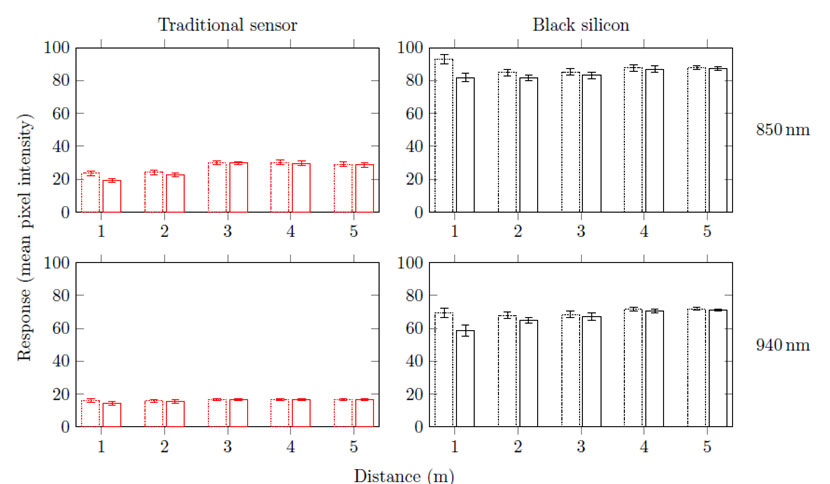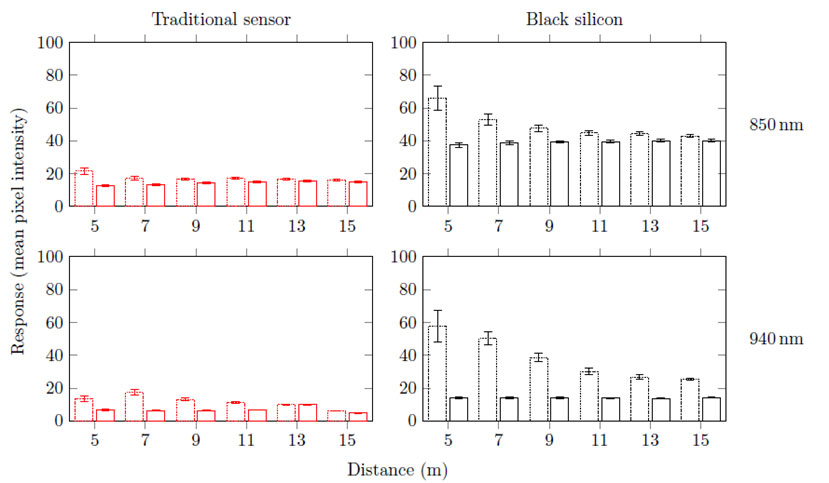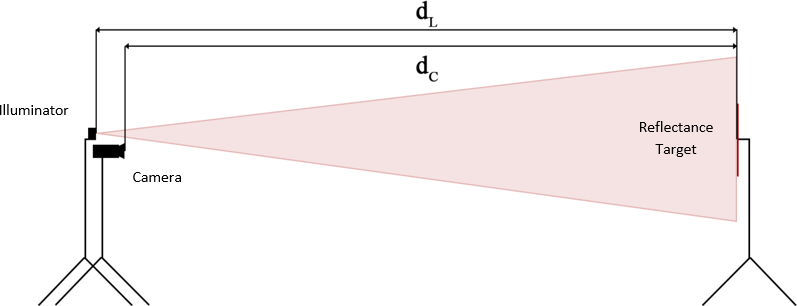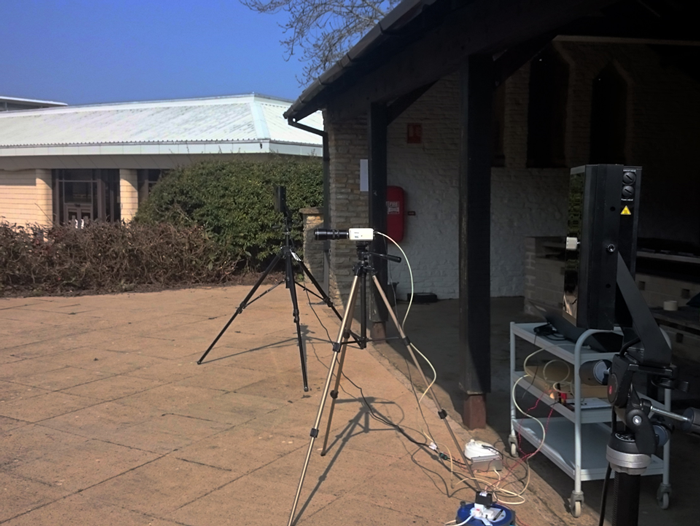
Photometric Stereo can be used to capture high-resolution surface relief maps of objects, using active illumination. A clear disadvantage of active approaches to the problem are that under bright ambient lighting, the signal-to-noise ratio can become so poor that reconstruction becomes impossible. This InnovateUK funded research sought to exploit state-of-the-art imaging technology, using black silicon to capture active illuminations at a higher wavelength than would normally be feasible using traditional cameras, thus taking advantage of atmospheric absorption of sunlight at 940nm to reduce ambient interference.
Key Technologies
C++ | OpenCV | QT | Matlab
How Did It Work?
In 2015, SiOnyx released a state-of-the-art machine vision camera containing a novel “black silicon” sensor, which provides a much higher response to light in the near-infrared than traditional cameras do. The following image shows the response of a 99% reflectance calibration panel, imaged using a standard nIR silicon machine vision camera (top) and a black silicon device (bottom), under 850nm and 940nm nIR light. Note that not only are the black silicon responses brighter, the shutter speed is almost 10x shorter than that of the standard sensor.
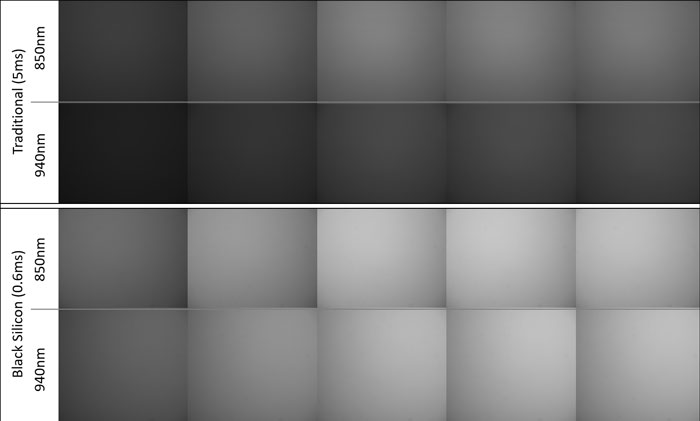
How does this help us? Well, as mentioned in the pre-amble, capturing 3D reconstructions in daylight using an active method is notoriously difficult. Ambient light from the sun reduces the signal-to-noise ratio of the active illumination resulting in a poor reconstruction. However, at certain wavelengths, sunlight is absorbed by moisture in the atmosphere – as indicated in the following plot from [1]:
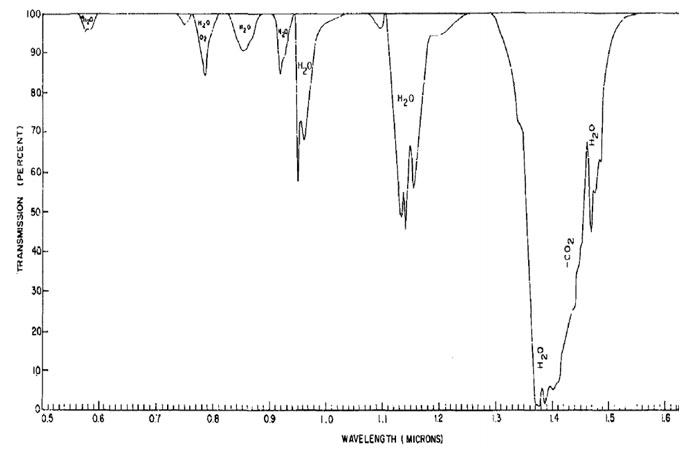
At 940nm, sunlight is absorbed heavily by water, which means that at ground-level there is heavily reduced atmospheric interference. Traditional cameras have poor sensitivity at this wavelength; however by exploiting black silicon technology, we can image reliably here.
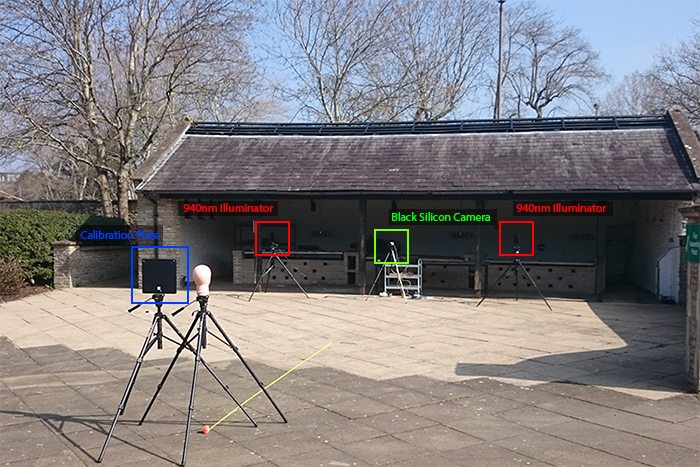
By using two 940nm LED illuminators, a 940nm band-pass filter and a telephoto lens on a black silicon camera, we were able to produce photometric stereo reconstructions at 15m, far beyond the previous achieved distances.
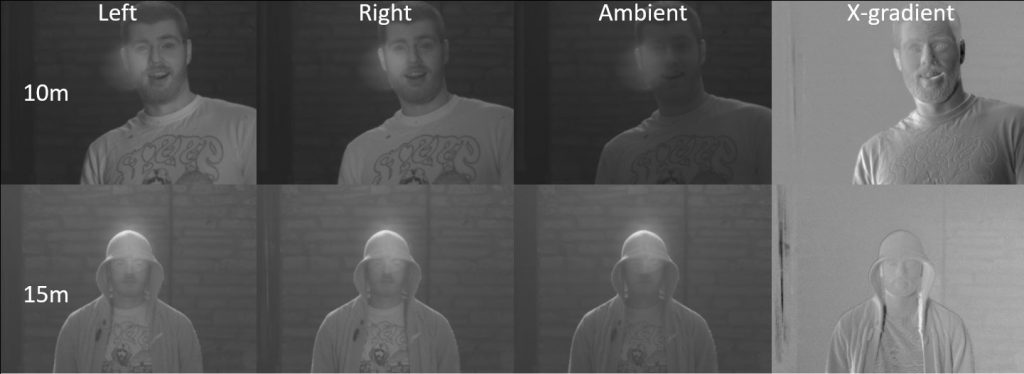
The results above show that we get strong shape information from the reconstructions, which can then be used for face recognition using the PhotoFace method [2] – details on this are shown in the published paper.
Future work is to take this approach further using laser illumination; however 940nm lasers are dangerous to eyesight, thus the realistic use-cases of this approach decrease considerably.
[1] Yates, H. W. and Taylor, J. H., “Infrared transmission of the atmosphere,” tech. rep., U. S. Naval Research Laboratory (1960).
[2] Kautkar, S., Atkinson, G. and Smith, M. (2012) Face recognition in 2D and 2.5D using ridgelets and photometric stereo. Pattern Recognition, 45 (9). pp. 3317-3327. ISSN 0031-3203 Available from: http://eprints.uwe.ac.uk/16934
This work was published in: Hales, I. J. , Williamson, D. R. , Hansen, M. F. , Broadbent, L. and Smith, M. (2015) Long-range concealed object detection through active covert illumination. In: Huckridge, D. A. , Ebert, R. , Gruneisen, M. T. , Dusek, M.and Rarity, J. G. , eds. (2015) Electro-Optical and Infrared Systems: Technology and Applications XII; and Quantum Information Science and Technology. Toulouse: SPIE Publications. ISBN 9781628418583
